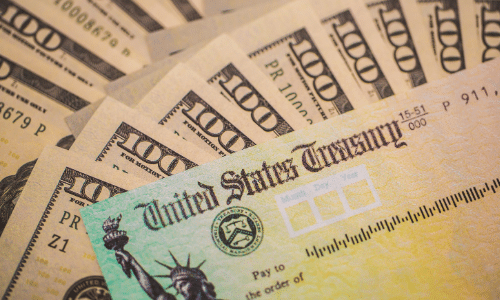The pandemic devastated the small business sector in 2020, so the government passed another round of stimulus measures in December of 2020. This December 2020 stimulus package provided additional support for the Coronavirus Relief Fund (CRF), including direct payments to individuals and more loans for struggling businesses. The bill also extends supplemental unemployment benefits and provides additional resources to fighting the pandemic. However, many of our small business clients want to know how the bill affects their bottom line. Keep reading to find out everything you need to know about the latest round of COVID-19 stimulus.
December 2020 Stimulus Package: PPP Updates
PPP loans are available to small businesses as part of the CARES Act. The first set of PPP loans were provided for in April 2020 and depleted by August. The CRF addresses the need for continued funding and clarifies the loan forgiveness process, which was previously unclear. Read on to learn more about the specific updates.
Expansion of PPP
The CRF, signed in December 2020, allocated an additional $284 billion to the Paycheck Protection Program. Referred to as second draw loans, these funds enable small business owners to access additional capital. Loan amounts are based on your average monthly payroll in 2019, with a maximum $2 million loan amount.
To determine your estimated loan amount, take your business’ average monthly payroll for 2019, and multiply that by 2.5. This figure should provide a rough estimate of how much money you will qualify to cover payroll expenses for two and a half months. Restaurants have access to an additional 40% in funding and multiply their average payroll by 3.5.
Sole Proprietors
For sole proprietorships, monthly payroll is calculated based on net income for 2019 or 2020 divided by 12 and multiplied by 2.5. Also, recent legislation requires the following documentation:
Suppose the applicant is self-employed and does not have employees. In that case, the applicant must provide (a) its 2019 or 2020 (whichever year was used to calculate loan amount) Form 1040 Schedule C, (b) a 2019 or 2020 (whichever year was used to calculate loan amount) IRS Form 1099-MISC detailing nonemployee compensation received (box 7), invoice, bank statement, or book of record that establishes that the applicant is self-employed; and (c) a 2020 invoice, bank statement, or book of record to verify that the applicant was in operation on or around February 15, 2020.
Only businesses with fewer than 300 employees or less qualify for a second-round draw. If you still have money left from your first PPP loan, you must spend it or have plans to spend it before qualifying for a second draw loan. You must allocate the PPP loan funds within 24 weeks. Funds are to be used to pay payroll, rent, mortgage payment, operating expenses, and covered property damage, costs related to COVID-19 protection equipment for employees.
How to Calculate the Loss of Revenue Qualification
Your business must have less than 300 workers to qualify for a second draw loan. If you still owe money from your first PPP loan, you must certify that you experienced a 25% revenue drop to qualify. Compare your 2020 quarterly revenue with your quarterly revenues from 2019 to determine if you meet the criteria.
This example explains how to calculate the 25 percent decrease:
Step 1: Establish quarterly revenue for year-over-year quarters.
For example, you may take revenues from the second quarter: April 1, 2020, through June 30, 2020. Suppose that number is $50,000 for simplicity. Next, do the same for the same 2019 period. Suppose that in 2019, over the same period (April 1, 2019, through June 30, 2019), you recorded $75,000 in revenues.
Step 2: Calculate the percentage change:
([New Revenue] – [Old Revenue]) / [Old Revenue].
In our example, those numbers are ($50,000 – $75,000) / $75,000. Once calculated, the percentage change would be -33.33% (-$25,000/$75,000), satisfying the reduction in revenue condition.
To qualify, you must show at least a 25% year-over-year reduction (negative 25% according to the above formula) in income for at least one quarter of 2020. Note that you may need to compare revenue for multiple quarters to evaluate whether you have sustained the appropriate revenue reduction. This condition intends to exclude businesses that have grown during the ongoing shutdown.
Qualifying for Loan Forgiveness
Under the initial stimulus package, expenses paid from the proceeds of a PPP loan were not tax-deductible, which was an oversight by lawmakers that unjustly increased their tax burden. The second stimulus bill explicitly states that business owners can deduct expenses paid with PPP funds for first and second draw loans. It also exempts emergency EIDL Grants and Advances, as well as loan forgiveness from being taxable. Many of these clarifications have come from the Treasury Department and Internal Revenue Service taking positions contrary to Congress’s intent before this legislation. A simplified one-page application is available but we recommend contacting your bank for additional details.
PPP and Deductible Expenses
Under the initial stimulus package, you couldn’t deduct expenses paid with PPP funds. However, lawmakers later said the decisions unjustly taxed PPP borrowers and changed the rule.
The second stimulus bill sets the record straight once and for all. PPP borrowers can deduct expenses paid with first and second-draw PPP loans. It also exempts emergency EIDL Grants and Advances, as well as loan forgiveness from being taxable. Many of these clarifications have come as a result of the Treasury Department and Internal Revenue Service taking positions contrary to the intent of Congress prior to this legislation.
Get Help With Your Accounting
Not sure whether you qualify for a second draw loan? An accounting professional can help! Our Tax Hack pros can answer all of your toughest tax and accounting questions. We offer bookkeeping, tax prep, and much more. Sign up for a one-on-one strategy session today and let us

